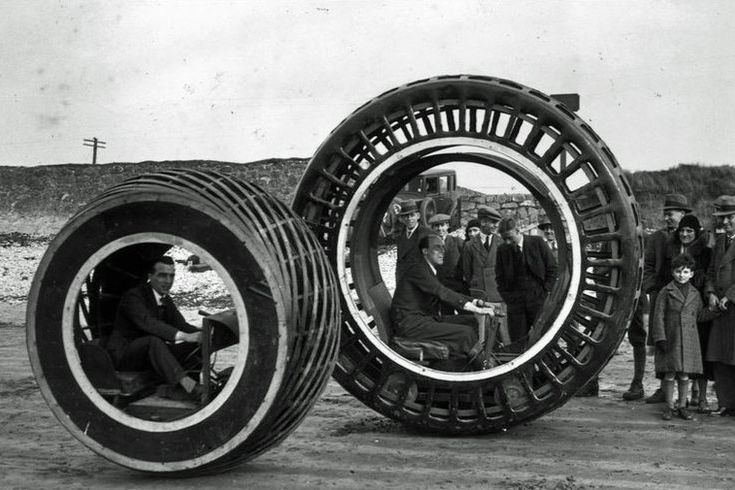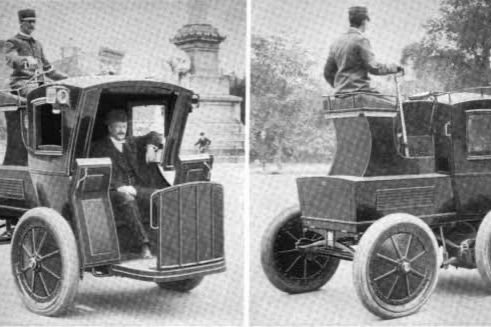1. Lead-Based Cosmetics

For centuries, across various cultures, people sought pale complexions using cosmetics containing lead, notably the product known as “Venetian Ceruse” in the Renaissance era. This white makeup was highly valued for creating a smooth, porcelain appearance, but its toxic nature led to devastating health consequences, a slow-acting chaos for its users. Chronic exposure to lead caused severe skin damage, hair loss, headaches, digestive issues, and ultimately, death or permanent brain damage. Its use dwindled as the medical community finally connected the deadly beauty trend to its tragic effects, though it took centuries for the practice to fully vanish.
2. The Bat Bomb

The Bat Bomb was a bizarre World War II concept proposed by a dentist named Lytle S. Adams, which aimed to drop thousands of tiny incendiary bombs attached to bats over Japanese cities. The idea was that the bats would roost in buildings, and a timer would ignite the bombs, causing widespread fires. Initial tests in 1943 were a disaster, as some bats escaped from a testing facility in Carlsbad, New Mexico, and accidentally set fire to a hangar, a general’s car, and a significant portion of the base, causing a small-scale, costly, and embarrassing chaos on American soil. The project was eventually shelved in favor of more conventional weaponry, but not before proving the unpredictable nature of biological dispersal systems.
3. The Dynasphere Monowheel

The Dynasphere, invented by John Archibald Purves in the 1930s, was a gigantic, single-wheeled vehicle designed to improve efficiency and travel. Passengers would sit inside a large wheel, which was propelled by an internal engine, giving the impression of a giant hamster wheel. While sleek and futuristic in design, the invention proved incredibly chaotic in motion. The most significant problem was “gerbiling,” where braking or accelerating too hard caused the internal cab to spin wildly inside the wheel, throwing the driver and passengers violently around. Safety concerns and steering difficulties meant this high-tech rolling death trap never moved past the experimental phase and disappeared from roads forever.
4. Radium-Infused Products

In the early 20th century, before the catastrophic effects of radiation were fully understood, radium was promoted as a miraculous cure-all, leading to a strange market of radium-infused products. Everything from chocolate and toothpaste to bath salts and drinking water, like the infamous “Radithor,” was sold with claims of vitality and health benefits. The chaos was inevitable: users suffered from radiation poisoning, developing horrific health problems like necrosis of the jaw, and, in the case of Radithor user Eben Byers, a slow, agonizing death. The highly-publicized tragedy of Byers and the tireless work of activists eventually led to the crackdown on these deadly elixirs, making them vanish from shelves.
5. The Thalidomide Drug

Thalidomide was a drug widely prescribed in the late 1950s and early 1960s, primarily as a sedative and for treating morning sickness in pregnant women. It was initially hailed as a safe and effective medication, but it rapidly became one of the greatest pharmaceutical disasters in history, causing unspeakable chaos. It soon became clear that the drug was a potent teratogen, resulting in tens of thousands of babies born with severe birth defects, most famously phocomelia, a shortening or absence of limbs. The worldwide scandal and the heartbreaking consequences led to the immediate and permanent withdrawal of the drug for pregnant women, dramatically changing drug regulation standards globally.
6. Greek Fire

Greek Fire was an incendiary weapon used by the Byzantine Empire, first employed in naval battles to great and chaotic effect, as it was nearly impossible to extinguish with water. This secret weapon gave the Byzantines a powerful edge for centuries, allowing them to repel numerous attacks, most famously during the Arab sieges of Constantinople. Its formula was a closely guarded state secret, adding to its mystique and military advantage. However, sometime after the decline of the Byzantine Empire, the knowledge of its exact composition was lost. The original, devastating version of this chemical weapon vanished entirely from historical record, leaving its impact to historical accounts and speculation.
7. The Perpetual Motion Machine

The perpetual motion machine is a device that can continue to operate indefinitely without an external energy source, a concept that has captivated inventors for centuries. While promising free energy and an end to fuel dependence, these machines inherently violate the first and second laws of thermodynamics, making their chaos-causing failure a scientific certainty. Numerous attempts have been made, leading to short-lived public excitement followed by financial chaos and disillusionment as the “inventors” were exposed as either misguided or outright frauds. These machines consistently fail and disappear, unable to defeat the fundamental laws of physics that govern the universe.
8. The General Motors EV1

The General Motors EV1 was an electric car introduced in the 1990s as a response to California’s zero-emissions vehicle mandate. It was leased to drivers and represented a significant, popular step toward sustainable personal transportation, but its short existence created a strange kind of chaos. Despite enthusiastic customer reviews and a waiting list of interested drivers, GM ultimately reclaimed all the cars, citing high production costs and maintenance issues. Most were then controversially crushed and scrapped, sparking public protests and accusations that traditional auto and oil companies deliberately suppressed the technology to protect their market, turning a clean energy hope into a vanishing act.
9. Dodo Skinning Knives

While not a technological invention, the specialized tools developed by sailors and early settlers for efficiently killing and preparing the now-extinct Dodo bird caused an ecological chaos that wiped out an entire species. These knives and methods, coupled with the introduction of new predators, were highly effective against the flightless, fearless bird of Mauritius. Within less than a century of human arrival, the Dodo was driven to extinction. Once the bird was gone, the tools and specific practices related to its hunting vanished from use, becoming a grim reminder of how human ingenuity can lead to devastating and irreversible ecological loss.
10. Glow-in-the-Dark Radium Dials

In the early 20th century, watch faces and instrument panels were painted with radium-based glow-in-the-dark paint, a highly sought-after innovation for visibility in the dark. The young women, known as the “Radium Girls,” who painted these dials were told the substance was harmless and were even encouraged to lick their brushes to maintain a fine point. This practice led to catastrophic, slow-motion chaos: the ingestion of radium caused radiation poisoning, leading to severe illnesses, bone necrosis, and premature death. The workers’ fight for justice exposed the dangers of radium and led to a landmark moment in labor law and safety regulations, forcing the deadly practice to vanish from factories.
11. The Segway Personal Transporter

When it was unveiled in 2001, the Segway personal transporter was heralded by its inventor, Dean Kamen, as a revolutionary device that would change how cities were designed and how people moved. It was a self-balancing, two-wheeled electric vehicle that promised to be the next great invention after the car. However, the Segway struggled to find its place, causing a different kind of chaos in public spaces as people argued over where it belonged, sidewalks or streets. Safety concerns, high cost, and, perhaps most bizarrely, a fatal accident involving the company’s owner, ultimately stalled its widespread adoption. After a brief period of use by police and tour groups, the original Segway line vanished from production in 2020.
12. The Dynacab (Automated Taxi)

The Dynacab was a concept developed in the 1960s for a completely automated taxi system, which aimed to revolutionize urban transit and end traffic congestion. The idea centered on small, driverless electric vehicles that would run on a network of dedicated guideways, allowing passengers to input their destination and be routed directly. This ambitious project, though a marvel of early automation thinking, ultimately failed to move beyond the design phase. The sheer scale, cost, and complexity of building the massive infrastructure required to support the separate guideways and control system proved too chaotic to manage, leading to the entire concept being quietly shelved and vanishing from urban planning efforts.
13. The Water-Powered Car Scam

Numerous individuals throughout history have claimed to invent a car that runs on water, or a mix of water and gasoline, promising to end reliance on fossil fuels and create an energy utopia. These claims have repeatedly created chaotic financial and legal situations. The inventions, often involving proprietary electrolysis or “secret additives,” inevitably proved to be scams, with the inventors unable to replicate their results under controlled conditions. The most famous, the ‘Pogue Carburetor’ in the 1930s and ‘Stanley Meyer’s Water Fuel Cell’ in the 1980s, generated intense, fleeting media buzz before the devices vanished under the scrutiny of physicists, who confirmed the impossibility of creating more energy than was consumed.
14. The Polybolos Repeater Ballista

The Polybolos was an ancient Greek repeating ballista, a mechanical dart-thrower, invented by Dionysius of Alexandria around the 3rd century BC. It was a technological marvel, essentially a giant, wooden machine gun capable of rapidly firing a continuous stream of arrows. Its existence would have been militarily chaotic for enemies, vastly increasing the rate of fire on a battlefield. However, due to its immense complexity, reliance on highly skilled operators, and constant need for maintenance and repair, the device did not achieve widespread or sustained use. Over time, the knowledge to build and maintain the precise mechanisms was lost, causing this unique, advanced weapon to vanish from the arsenals of later empires.
15. The Replicating Autochromes

Autochromes, invented by the Lumière brothers, were the first successful commercial process for color photography, patented in 1903. They produced stunningly vivid, one-of-a-kind glass plate positives, creating a chaos of enthusiasm among photographers and the public. Unlike modern photography, however, it was virtually impossible to mass-replicate or easily print the resulting color image, which limited its commercial viability. The process was painstaking, expensive, and the glass plates were fragile. Once more practical and easily reproducible color film processes, like Kodachrome, became available in the 1930s, the intricate, beautiful, but impractical autochrome technology rapidly faded and vanished from the photography landscape.
16. The Rocket Belt for Individual Use

Throughout the 1960s, various inventors and engineers developed personal rocket belts or ‘jet packs,’ promising to liberate the individual from ground travel and usher in an age of chaotic personal flight. These devices, famously demonstrated at the 1984 Los Angeles Olympics, used highly volatile propellants like hydrogen peroxide and could only sustain flight for less than a minute. The sheer danger, exorbitant fuel cost, and difficulty of piloting meant they were simply too impractical and perilous for consumer use. They caused minor chaos whenever tested, due to their noise and limited control, but the dream of a civilian personal rocket belt vanished, remaining strictly in the realm of stunt performers and science fiction.
17. The Edison Electric Pen

In 1876, Thomas Edison invented the electric pen, an early office machine designed to create stencils for duplicating handwritten documents. The pen used a high-speed reciprocating needle powered by a small electric motor to punch tiny holes in paper, which could then be used to create copies. While a novel idea, the invention proved chaotic for the user: the motor was noisy and bulky, the pen was awkward and heavy to write with, and the batteries were prone to leakage. It was not a success as a writing tool and quickly vanished from the market. Edison eventually sold the patent, and the underlying technology was adapted to create the much more successful and widely used mimeograph machine.
18. The Slenderizing Salon Vibration Belts

In the mid-20th century, ‘slenderizing salons’ became popular, offering machines with vibrating belts and rollers that promised to ‘shake off’ fat and reduce weight with no effort. These devices, which were often large, metallic contraptions, created a temporary cultural chaos in the dieting industry by suggesting an easy, passive path to fitness. However, the machines were eventually proven to be ineffective for weight loss or muscle toning by medical experts. Scientific consensus revealed that only actual exercise and diet could achieve lasting results. The realization that they were a gimmick led to their rapid disappearance from fitness centers and health spas, becoming a strange, bulky relic of a misguided era.
The history of invention is truly a roller coaster, filled with brilliant ideas that, for one reason or another, be it sheer danger, economic failure, or unexpected negative consequences, just couldn’t sustain their existence. These 18 entries serve as a fascinating reminder that not all breakthroughs lead to lasting revolutions; sometimes, they just lead to chaos before quietly fading away.
Like this story? Add your thoughts in the comments, thank you.
This story 18 Strange Inventions That Vanished After Causing Chaos was first published on Daily FETCH


